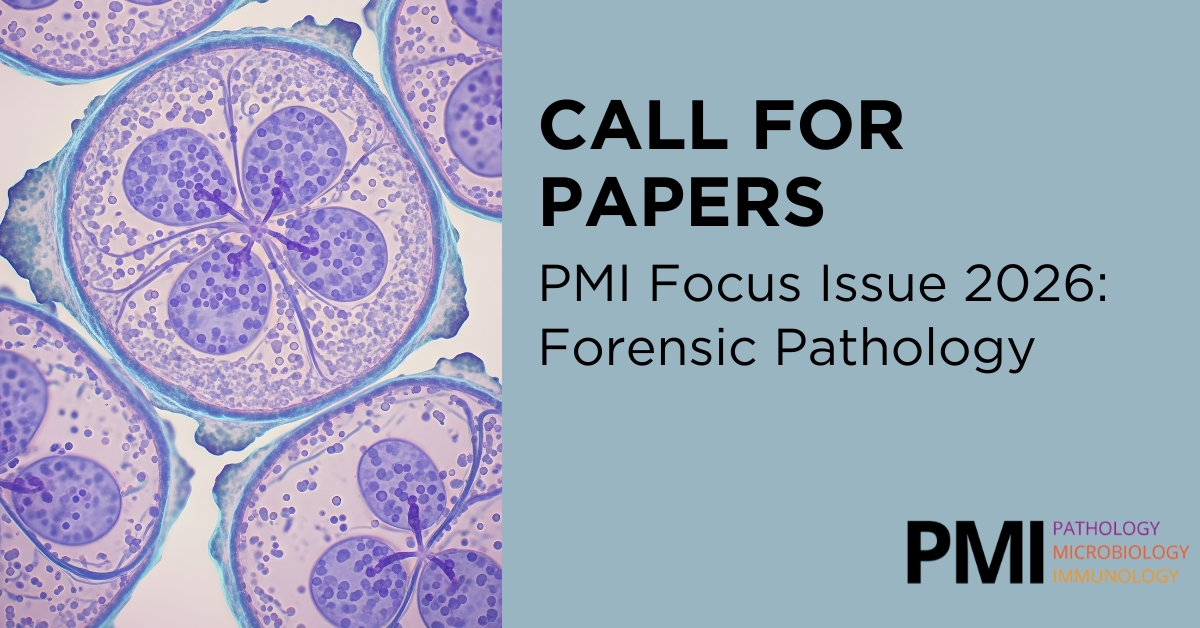The Journal of Pathology, Microbiology and Immunology (PMI Journal) invites submissions for a new focus issue on forensic pathology.
We welcome both original research articles and comprehensive reviews that advance knowledge, methodology and applications within the field.
Submissions may address, but are not limited to:
- Advances in post-mortem examination and interval estimation
- Pathological investigation of unexpected or unexplained deaths
- Molecular and genetic approaches in forensic pathology
- Ethical, legal, and societal dimensions of forensic practice
- Interdisciplinary perspectives (toxicology, anthropology, forensic medicine)
All contributions will be subject to a single-blinded peer-review process and acceptance relies with the journal’s Editors-in-Chief.
Editor: Alexandra Gabriella Gheorghe
Submission deadline: 1 April 2026


